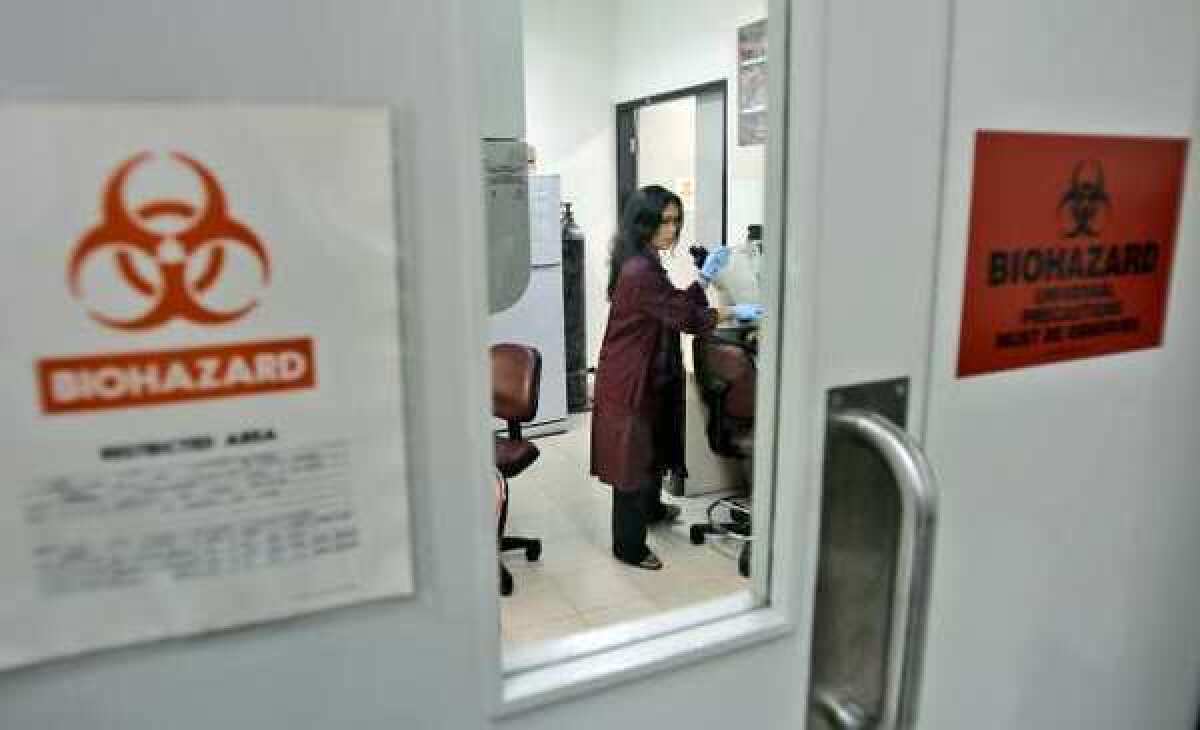H5N1: What kind of oversight is best for bird flu research?

- Share via
The upshot of months of controversy over whether to publish research that used the H5N1 avian flu virus -- experiments in which scientists engineered forms of the bug that could spread through the air to infect mammals -- was that scientists got to publish their work in full in a special issue of the journal Science on Thursday.
At the same time, the U.S. government and health officials around the world continued to ponder what to do next about so-called dual use research of concern: experiments with scientific merit that can also pose a threat to health and security. In March, the U.S. released a new policy to help begin the process of monitoring the pathogen research, but experts said this week that the guidelines didn’t go far enough to solve the problem.
They had different takes on what future oversight of bird flu research would — or should — look like. One commentary article in Science’s special issue called on strict controls on who can conduct bird flu research. Another argued that probably wouldn’t work.
The author of yet another commentary, Carrie Wolinetz of the Assn. of American Universities, told the Los Angeles Times in an interview that she thought self-regulation would be most appropriate, with additional biosafety and biosecurity training to get scientists thinking seriously about the potential threats posed by their research.
“We see that when the awareness is raised, scientists are generally very responsible,” she said. “I think following the guidelines for education and communication as more of a voluntary system would be a better way forward then trying to regulate, with a knee-jerk policy response, an incredibly complicated issue like dual use research of concern.”
But Richard Ebright, a molecular biologist at Rutgers University who has been critical of the community’s approach to dual use research, said researchers would need a strong push from authorities to get meaningful reform under way:
The March 29 policy does not call for a system of review or a system of oversight. It merely calls for enumeration of projects involving dual-use research of high concern. Each funding agency merely needs to compile a list of these projects and to ensure that each PI prepares a risk mitigation plan and files it with the agency. This is not a system of review. This is a system of registration.
What is needed is a formal and mandatory system of review, analogous to the current systems for review of human-subjects and vertebrate-animals research.
We already have models that work. These are already applied to tens of thousands of experiments annually. We merely need to apply these to the tens of experiments that involve dual-use research of high concern. The only reason not to do it is a lack of will. It’s not a matter of lack of models and not a matter of lack of resources.
The system for review of pathogens research would probably best be modeled on the system for review of recombinant DNA research, with institutional panels looking at a narrow set of research projects and passing along an even narrower set of projects for review by a national panel outside the funding agencies, like the RAC.
This is not rocket science. This is not even molecular biology. This is simple public policy. And the decision to proceed is one of will, not of complexity. Most scientists would prefer not to be regulated. Just as most bankers would prefer not to be regulated.







